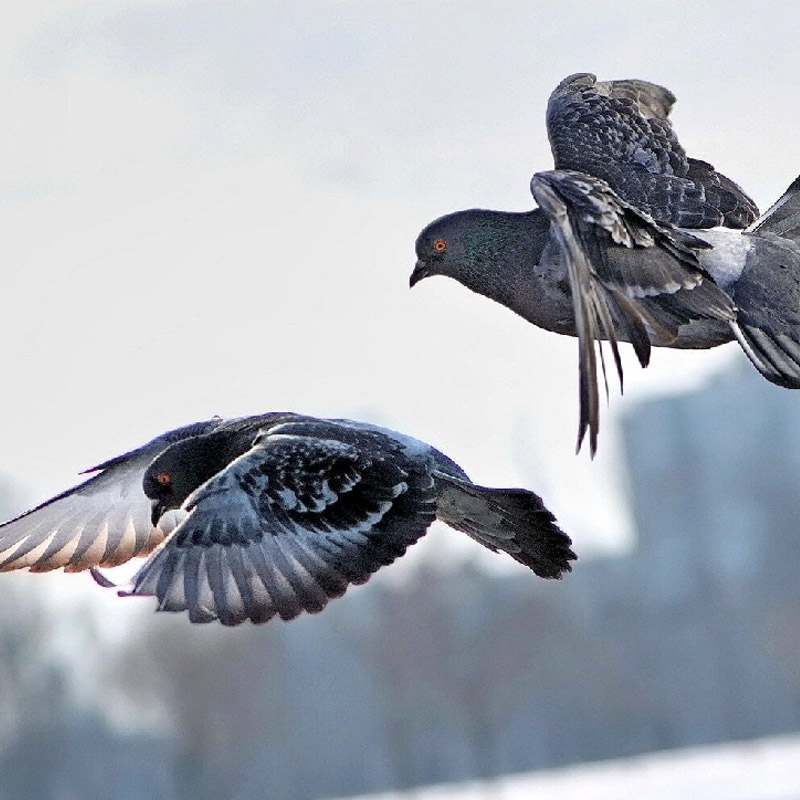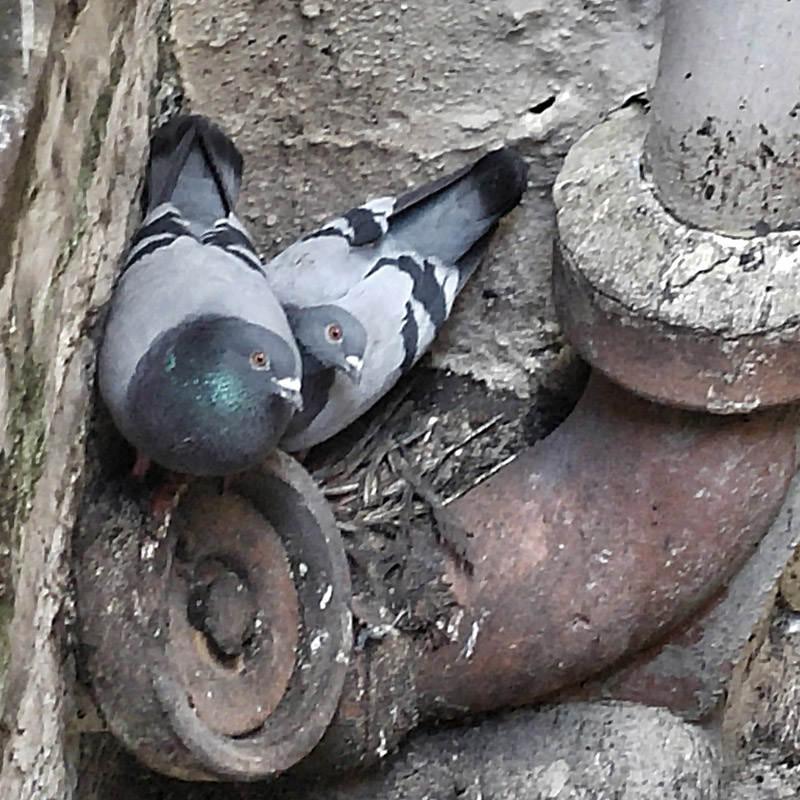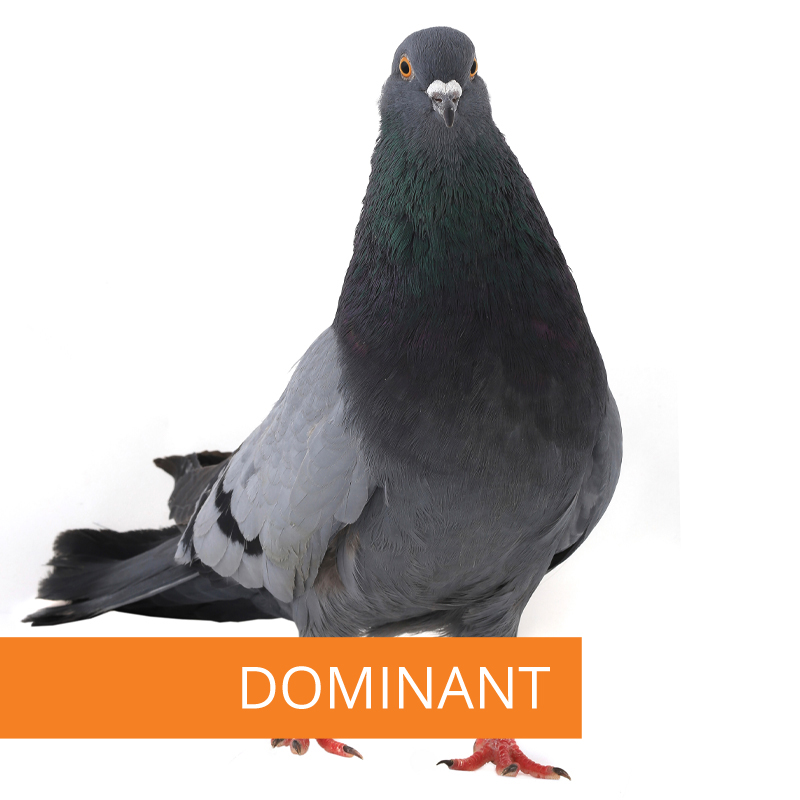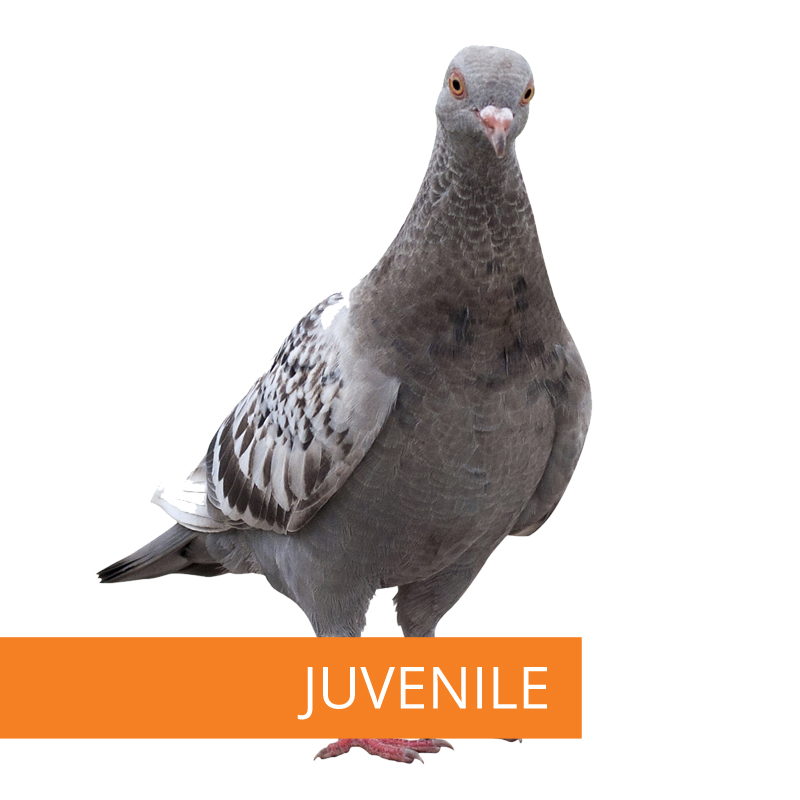Successful Breeders
What’s the breeding problem with pigeons?
As with any pest management issue, it is important to understand the biology of the pest, to best understand how to effective develop a management strategy.
Pigeons breed all year round, with peak breeding periods in spring and summer. All pigeons (columbiformes) are monogamous in that they pair up and mate for life.
The life expectancy varies greatly from 3-5 years in the wild and is dependent on many factors, such as food supply, natural predation and human interference.
They are not great nest builders. A flimsy structure is often built on accessible ledges on a building or in the roof void of a building. Eggs and chicks are often casualties of this precarious habit.
Pigeon life cycle
Pigeons will breed between 4 and 8 times a year depending on resource availability (food, water) and climate. In warmer conditions, often found in inner city areas, they can breed all year round.
They usually lay two eggs a few days apart. Even once these hatch a new batch of eggs may be laid before the previous young have fledged and left the nest. This habit of regular breeding explains why, when conditions are ideal, large colonies and flocks can form in a very short time, even with eggs falling from nests and chicks dying.
This also explains, why after a cull or population reduction operation. such as trapping or shooting, colonies have a huge capacity for recovery. Not only can these actions deliver a short term effect, any direct approach to control birds by lethal means, must respect and comply with various legal matters not least of which are those relating to animal welfare.
Population Dynamics
One of nature’s most fascinating phenomena is the collective behaviour of animals. Pecking order is the colloquial term for the hierarchical system of social organisation. It was first described by Thorleif Schjelderup-Ebbe in 1921 and originally referred to the expression of dominance in chickens. Within a colony of pigeons, a social hierarchy exists among the individual birds, both when in the air and on the ground.
As a consequence, of this social hierarchy, juveniles may leave to find better conditions for feeding and opportunities for breeding. Dispersal within a given city is significant. Approximately 30% of fledglings have been seen to disperse each year on average as they move to find more suitable conditions with other colonies.
Once established in a location, pigeons can remain for a long time. They may move around in large flocks but it is unlikely that pigeons would fly from one city to another (unless they are of the racing variety). Flocks may leave city boundaries to forage in nearby fields, especially if they contain attractive crops. The flock returning to the city then to roost





